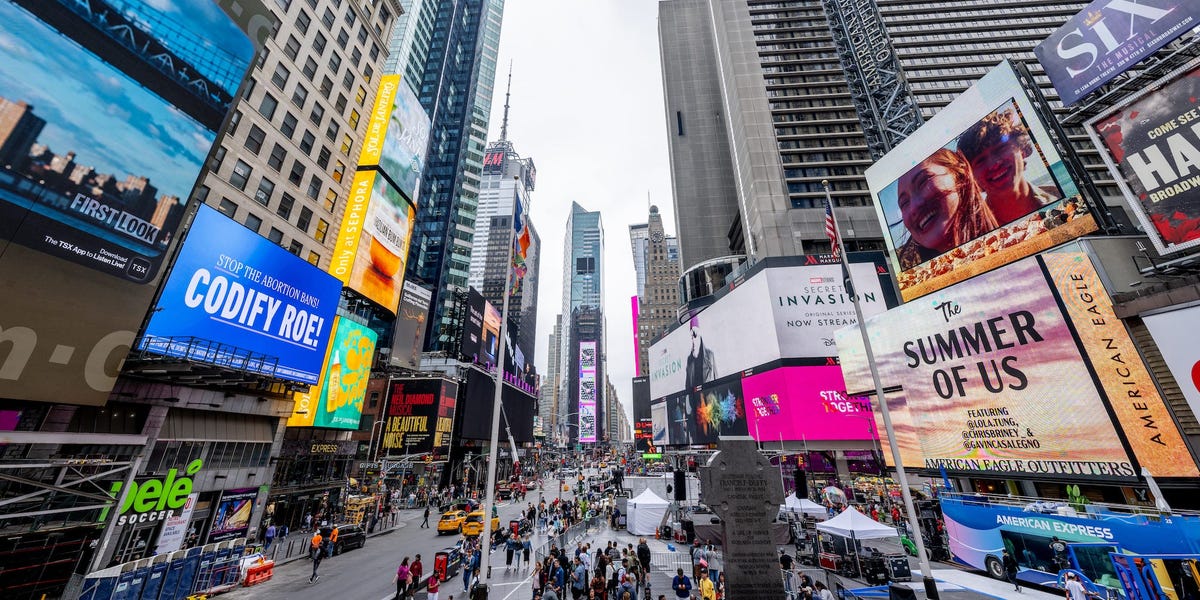Marketers have expressed cautious optimism looking ahead to 2024, with 60% of respondents in a new survey saying they plan to increase their ad budgets next year.
The findings, from the World Federation of Advertisers and Ebiquity, represent the views of 92 large advertisers collectively responsible for more than $50 billion in annual global advertising spending.
It’s another indicator that the recent advertising downturn could be coming to an end. Just 29% of respondents last year said they were expecting to increase their media budgets in 2023.
Of the remaining 40% of those surveyed, roughly one-third (33%) said they intended to maintain their 2023 budgets into 2024. Just 2% said they planned a “significant decrease” and 5% said they expected a “slight decrease.”
“I’m positively surprised,” said Stephan Loerke, CEO of the World Federation of Advertisers. “You’d think in the current climate, the outlook would be more uncertain.”
Still, he added, this optimism could be derailed if the conflict in the Middle East escalates further, and if oil prices rise.
A head of media at a large food brand told Insider their business had been worried going into 2023 because their costs for things like ingredients and energy had increased dramatically, causing them to raise their prices. But 2023 turned out to be much better than predicted.
“Retailers accepted the price increases — which was not assumed — and consumers also adopted the increases,” said the exec, who requested anonymity because they were not authorized by their company to talk about forward-looking numbers. Insider is aware of their identity.
Just over one-third (35%) of respondents indicated they would increase their share of longer-term, brand marketing activity in 2024, compared with 21% who said they would do so last year. On the other hand, 21% said they would increase their mix of performance activity, marketing intended to drive more immediate results, which was down from the 28% of people who said they would do so last year.
“It’s a good bellwether. If you’re willing to spend on branding, you’re thinking longer-term,” said a head of media at a drinks brand who requested anonymity, similarly because they were not authorized to speak about their budgets.
This exec also cautioned that while signs are positive for next year, it’s not a complete swing back. “In difficult times, when budgets get cut, building them back up takes a little bit of negotiation with finance,” the exec said.
Video advertising is expected to be the main recipient of next year’s budget increases, with 85% of respondents saying they would either significantly or slightly increase their investments in connected-TV ads, for example. Meanwhile, print, linear TV, and radio were all likely to decline in their share of most marketers’ budgets in 2024, according to the report.
Marketers have more channels than ever before on which to advertise, thanks to the rise of nascent areas like retail and commerce media, CTV, and digital out-of-home advertising. But this brings added complexity and risk for advertisers.
“CTV is an area where it’s quite rife full of fraud and that’s what a concern,” said a head of media at a health company who requested anonymity because they weren’t authorized to discuss their company’s media budgets. “Everyone thinks we’ll go on streaming and video-on-demand but there’s a lot more fraud and fake streaming sites — I don’t think it’s as heavily regulated as it should be.”
Around a third of advertisers said they plan to conduct log-level analysis of the programmatic supply chains in 2024 and 2025, according to the report.
Read the full article here





